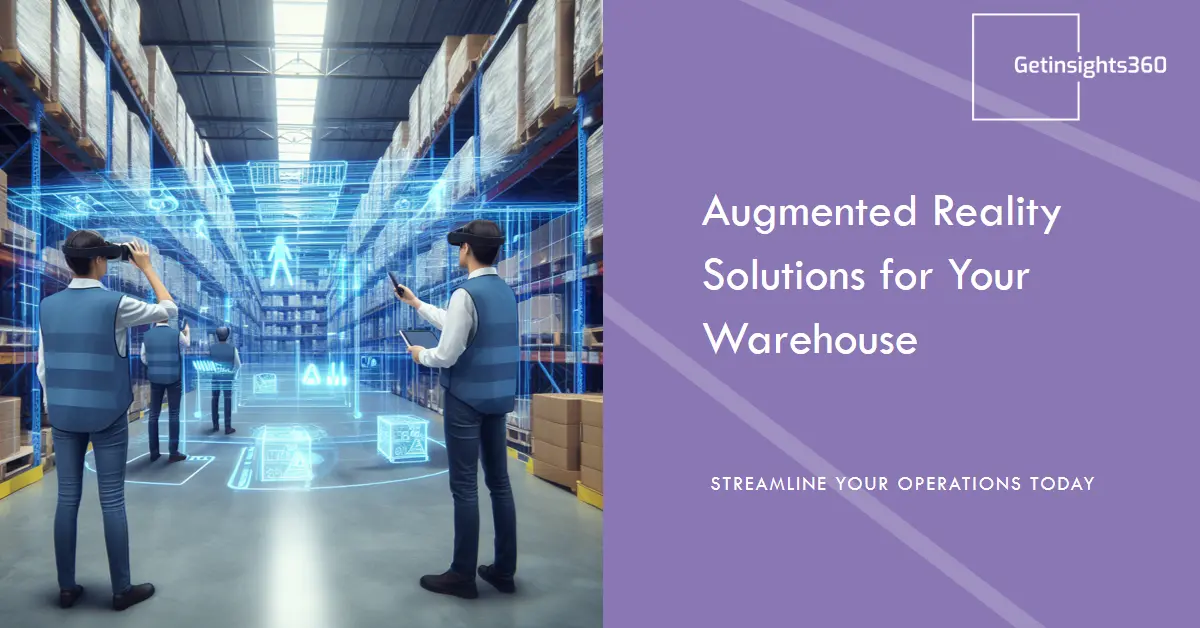
Streamline Your Warehouse with Augmented Reality Solutions
In the fast-paced world of warehouses and logistics, finding innovative solutions to enhance efficiency is key. One such groundbreaking technology making waves in the warehouse management landscape is Augmented Reality (AR). Let’s delve into how Augmented Reality in warehouses can streamline operations and revolutionize the way we manage inventory and processes.
Understanding Augmented Reality in Warehouses
Augmented Reality, in simple terms, is the integration of digital information into the real world. It overlays computer-generated images or data onto the physical environment, providing a blended, enhanced view of reality. In warehouses, AR takes this concept to the next level, offering a set of tools and solutions to optimize various tasks.
The Role of AR in Order Picking and Packing
One of the primary areas where AR proves its worth in warehouses is in the order picking process. Traditional methods often involve paper lists or handheld devices, which can be time-consuming and prone to errors. With AR, warehouse workers can wear smart glasses or use handheld devices that display essential information directly in their line of sight.
Imagine a scenario where an AR system guides a picker through the warehouse, highlighting the most efficient route to collect items. The AR interface can display relevant details, such as item location, quantity, and even packing instructions. This not only speeds up the picking process but also reduces errors, ultimately improving order accuracy.
Enhanced Training and Onboarding with AR
Warehouse operations often require specialized knowledge and skills. Augmented Reality can be a game-changer when it comes to training new employees. Instead of relying solely on manuals or classroom sessions, AR allows workers to learn on the job with interactive guidance.
New hires can use AR devices to receive step-by-step instructions for various tasks, from operating equipment to navigating the warehouse. This immersive learning experience helps reduce training time and ensures that workers are confident and efficient in their roles.
Real-Time Inventory Management with Augmented Reality
Keeping track of inventory in real-time is a crucial aspect of warehouse management. Augmented Reality offers solutions that enable workers to visualize inventory levels, locations, and other relevant information instantly. This real-time data helps in making informed decisions, preventing stockouts, and optimizing stock levels.
AR can also assist in the stock replenishment process. When inventory levels fall below a certain threshold, the AR system can notify workers and guide them to the exact location of the items that need restocking. This proactive approach minimizes delays and ensures a smoother workflow.
Minimizing Errors and Increasing Accuracy
Human errors in warehouses can lead to costly mistakes. Augmented Reality acts as a reliable assistant, reducing the likelihood of errors in various processes. By providing visual cues and guidance, AR helps workers pick the right items, pack them correctly, and fulfill orders accurately.
In addition to order accuracy, AR can enhance quality control processes. Workers equipped with AR devices can quickly identify and address discrepancies in products, ensuring that only high-quality items reach customers.
The Future of Augmented Reality in Warehouses
As technology continues to evolve, so does the potential of Augmented Reality in warehouses. The integration of AR with other emerging technologies, such as the Internet of Things (IoT) and artificial intelligence, holds even more promise for the future.
For instance, AR could be used in conjunction with IoT sensors to provide real-time updates on the condition of products. This could be particularly valuable for warehouses that handle sensitive or perishable goods, allowing for proactive measures to be taken in case of any deviations from ideal storage conditions.
Real-World Examples of AR in Warehouses
- DHL & Picking Efficiency: In a pilot project, DHL used AR glasses to guide workers through picking routes, highlighting the exact item and quantity needed at each location. This resulted in a 25% increase in picking efficiency and a 99% reduction in picking errors.
- IKEA & Furniture Placement: IKEA created an AR app that allows customers to virtually place furniture in their homes before purchasing. This not only improves customer satisfaction but also reduces product returns and warehouse workload.
- FedEx & Package Sorting: FedEx uses AR headsets to display sorting information directly on packages, eliminating the need for paper labels and streamlining the sorting process. This has led to a 15% increase in sorting speed and reduced mis-sorts.
- Amazon & Safety Protocols: Amazon implemented AR to overlay safety warnings and forklift paths onto workers’ vision, highlighting potential hazards and preventing accidents. This has significantly reduced the number of workplace injuries in their warehouses.
- Walmart & Inventory Management: Walmart utilizes AR-powered drones to scan and manage inventory in large warehouses. These drones autonomously navigate aisles, scan barcodes, and update inventory levels in real-time, leading to greater accuracy and reduced manual labor.
- Target & Training New Hires: Target uses AR simulations to train new workers on picking, packing, and safety procedures. These immersive simulations provide a safe and effective way to learn the ropes, and have significantly reduced training time and improved performance.
Conclusion
In conclusion, Augmented Reality is not just a buzzword; it’s a transformative technology that has the power to streamline warehouse operations. From improving order picking and packing to enhancing training processes and minimizing errors, AR is a versatile tool that can drive efficiency and productivity.
As more businesses recognize the potential of Augmented Reality in warehouses, we can expect to see continued innovations and integrations that further optimize supply chain processes. The future of warehouse management is undoubtedly augmented, and embracing this technology can put businesses on the path to a more efficient and agile future.